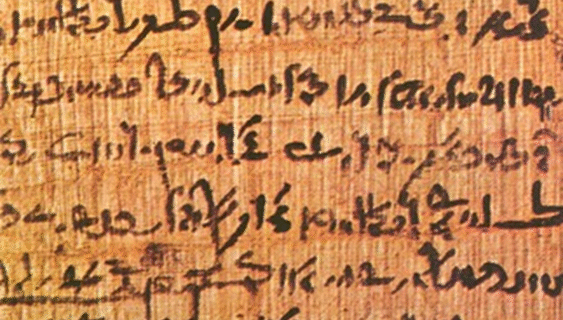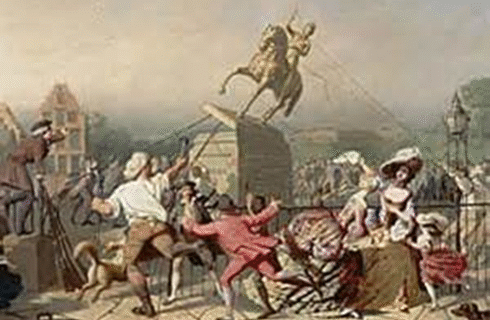John Harvard’s grandfather lived in Stratford-upon-Avon and was an associate of Shakespeare’s father.
His father was a butcher and owner of Queen’s Head Inn and Tavern. John Harvard was born in London and baptized on November 29, 1607, in the old St. Savior’s Parish near the London Bridge, present-day Southwark Cathedral. Most of his family died when a plague swept England in 1625.
The same year, Muslim Corsair pirates sailed up the Thames River and raided England. Giles Milton wrote White Gold: The Extraordinary Story of Thomas Pellow and North Africa’s One Million European Slaves 2004:
 In the book he recorded that the Islamist pirates attacked the coast of Cornwall, captured 60 villagers at Mount’s Bay and 80 at Looe. They attacked Lundy Island in Bristol Channel and raised the standard of Islam. By the end of 1625, over 1,000 English subjects were sent to the slave markets of Sale, Morocco.
In the book he recorded that the Islamist pirates attacked the coast of Cornwall, captured 60 villagers at Mount’s Bay and 80 at Looe. They attacked Lundy Island in Bristol Channel and raised the standard of Islam. By the end of 1625, over 1,000 English subjects were sent to the slave markets of Sale, Morocco.
Pilgrim Governor William Bradford wrote that in 1625, the Pilgrims sent back to London two ships of filled with dried fish and beaver skins to trade, and one was captured by the Turks: “Two fishing ships with codfish and 800 lbs. of beaver, as well as other furs, to a good value from the Pilgrims’ plantation went joyfully home till they were well within the England channel. But even there she was unhapply taken by a Turkish man-of-war and carried off to Saller Morocco where the captain and crew were made slaves.
 Thus all their hopes were dashed and the joyful news they meant to carry home was turned to heavy tidings. In the other big ship Captain Myles Standish arrived at a very bad time. A plague very deadly in London. And now with their first ship taken by the Turks, It turned out that all trade was dead.”
Thus all their hopes were dashed and the joyful news they meant to carry home was turned to heavy tidings. In the other big ship Captain Myles Standish arrived at a very bad time. A plague very deadly in London. And now with their first ship taken by the Turks, It turned out that all trade was dead.”
John Harvard’s mother and surviving brother died not long after from the plague, leaving John the entire family estate. John is believed to have attended the grammar school at St. Savior’s, where the rector, Nicholas Morton, diligently prepared him for acceptance into Cambridge, an amazing achievement for someone of the commoner class.
John Harvard entered Cambridge’s Emmanuel College, known for its Puritan views, the same school where Connecticut founder Rev. Thomas Hooker attended. John Harvard received his bachelor’s degree in 1632 and his master’s degree in 1635. He was later memorialized by a stained glass window in Emmanuel College chapel there.
A classmate of John Harvard at Emmanuel College was John Sadler. Sadler became London’s town clerk, a Member of Parliament, and private secretary to Oliver Cromwell. John Sadler’s sister was Ann, with whom John Harvard fell in love. Harvard married Ann Sadler at St. Michael the Archangel Church in 1636, the same year that Harvard College at Cambridge was founded in Massachusetts.
During this time after the Renaissance and Reformation, there was a “Hebrew Revival” among Protestant and Catholic scholars. They studied the history of ancient Israel, especially the first 400 year period in the Promised Land before Israel got its first king, Saul. I have written about this amazing 400 hear period before. It was the first republican form of government in world history. The scholars in Europe and America studied it closely. It was from its history that “self government” on both sides of the Atlantic were eventually instituted.
The scholars of that day studied the self-governing ancient Hebrew Republic; the Hebrew language; Jewish historian Josephus; the Jerusalem Talmud 2nd century A.D.; the Babylonian Talmud 4th century A.D.; Jewish philosopher Maimonides; and Rabbinic literature; all to learn about that amazing 400 year period of the Jewish government.
Claude Fleury wrote in The Manners of the Ancient Israelites, 1681: “The Israelites were perfectly free. They enjoyed the liberty cherished by Greece and Rome. Such was the purpose of God.”
E.C. Wines wrote in Commentaries on the Laws of the Ancient Hebrews, 1853 (NY: Geo. P. Putnam & Co., 1853): “Of those great ideas, which constituted the basis of the Hebrew state, the most important was liberty. The Hebrew people enjoyed as great a degree of personal liberty, as can ever be combined with an efficient and stable government.”
In England, the Universities of Oxford and Cambridge taught
Yale, Dartmouth, Columbia, and other early American colleges had requirements for students to learn Hebrew. Yale has Hebrew letters on its Coat-of-Arms.
 In 1722, Harvard hired Judah Monis, its first full-time Hebrew instructor, who published A Grammar of the Hebrew Tongue, 1735 – the first Hebrew textbook published in North America.
In 1722, Harvard hired Judah Monis, its first full-time Hebrew instructor, who published A Grammar of the Hebrew Tongue, 1735 – the first Hebrew textbook published in North America.
 President Thomas Jefferson stated in his Second Inaugural, March 4, 1805: “I shall need, too, the favor of that Being in whose hands we are, who led our forefathers, as ISRAEL of old.”
President Thomas Jefferson stated in his Second Inaugural, March 4, 1805: “I shall need, too, the favor of that Being in whose hands we are, who led our forefathers, as ISRAEL of old.”
 Harvard President Samuel Langdon stated June 5, 1788: “The ISRAELITES may be considered as a pattern to the world in all ages of government on republican principles.”
Harvard President Samuel Langdon stated June 5, 1788: “The ISRAELITES may be considered as a pattern to the world in all ages of government on republican principles.”
 In 1637, John and Ann Harvard sailed for Massachusetts where he took “the freeman’s oath.” And he served as a teaching elder. At age 31, Reverend John Harvard contracted tuberculosis and died on September 14, 1638. Having no male heir, John left half of his 1,600 pound estate to Harvard at Cambridge, along with a library of over 400 volumes. John Harvard’s library included books by Homer, Plutarch, Aquinas, Bacon, Calvin, and Luther, Bible commentaries, volumes in Hebrew and Greek.
In 1637, John and Ann Harvard sailed for Massachusetts where he took “the freeman’s oath.” And he served as a teaching elder. At age 31, Reverend John Harvard contracted tuberculosis and died on September 14, 1638. Having no male heir, John left half of his 1,600 pound estate to Harvard at Cambridge, along with a library of over 400 volumes. John Harvard’s library included books by Homer, Plutarch, Aquinas, Bacon, Calvin, and Luther, Bible commentaries, volumes in Hebrew and Greek.
The General Court of Massachusetts Bay voted in 1639 to rename the College at Cambridge after John Harvard. It is the oldest institution of higher learning in America. On the wall by the old iron gate at Harvard University’s main campus entrance, and also noted in Harvard Divinity School’s catalog, is the statement of Harvard’s founders:
 “After God had carried us safe to New England, and we had builded our houses, provided necessaries for our livelihood, rear’d convenient places for God’s worship, and settled the Civil Government: One of the next things we longed for, and looked after was to advance Learning and to perpetuate it to Posterity; dreading to leave an illiterate Ministry to the Churches, when our present Ministers shall lie in the Dust. And as we were thinking and consulting how to effect this great work, it pleased God to stir up the heart of one Mr. Harvard, a godly gentleman and a lover of learning there living amongst us, to give the one half of his estate towards the erecting of a college and all his Library.”
“After God had carried us safe to New England, and we had builded our houses, provided necessaries for our livelihood, rear’d convenient places for God’s worship, and settled the Civil Government: One of the next things we longed for, and looked after was to advance Learning and to perpetuate it to Posterity; dreading to leave an illiterate Ministry to the Churches, when our present Ministers shall lie in the Dust. And as we were thinking and consulting how to effect this great work, it pleased God to stir up the heart of one Mr. Harvard, a godly gentleman and a lover of learning there living amongst us, to give the one half of his estate towards the erecting of a college and all his Library.”
Harvard’s declared purpose was: “To train a literate clergy.” This was consistent with 106 of the first 108 schools in America, which were founded on Christianity.
Ten of the twelve presidents of Harvard prior to the Revolutionary War were ministers. Fifty percent of the 17th-century Harvard graduates became ministers. Harvard College was founded in “In Christi Gloriam” as its founders believed: “All knowledge without Christ was vain.” In 1692, the motto of Harvard was: “Veritas Christo et Ecclesiae” — “Truth for Christ and the Church”.





